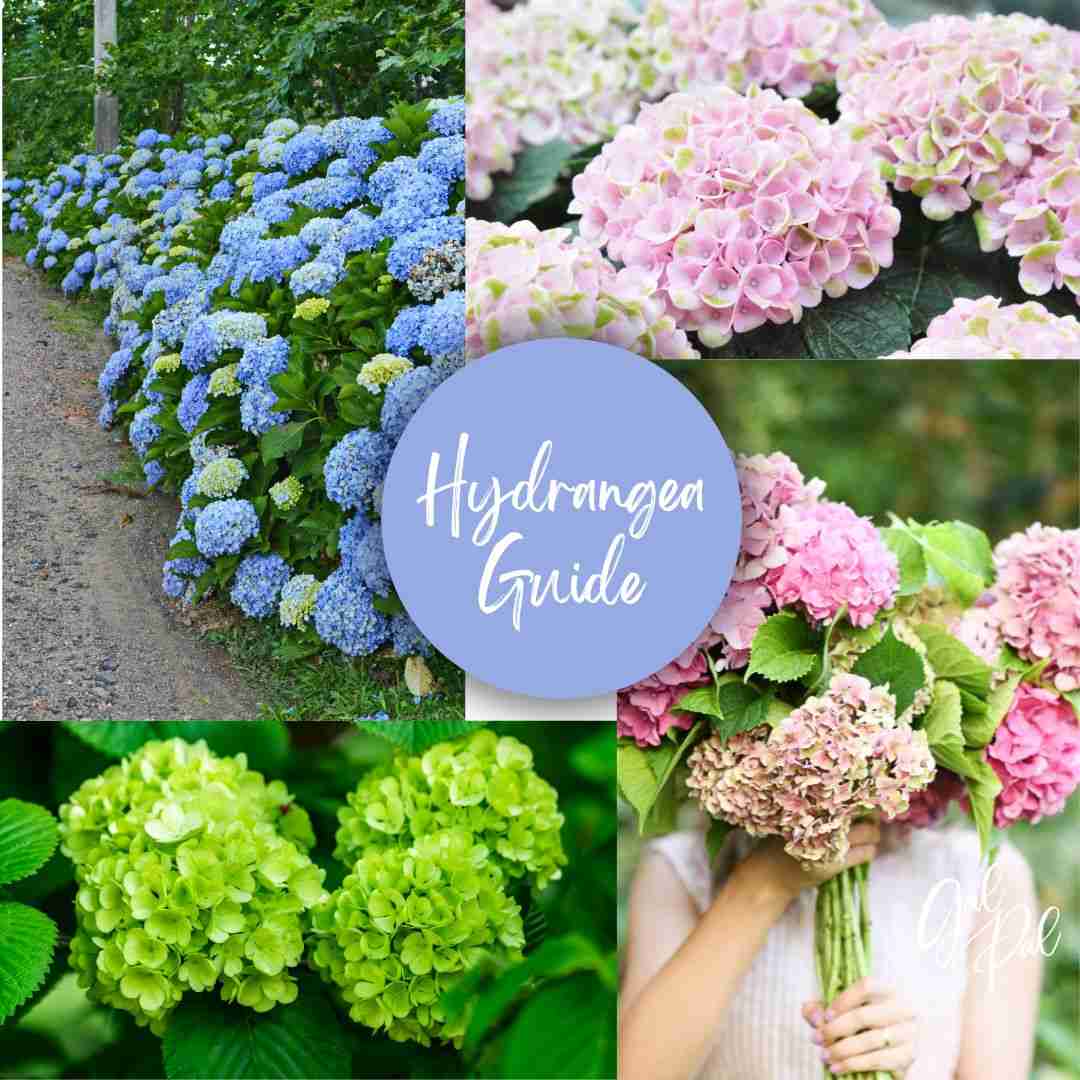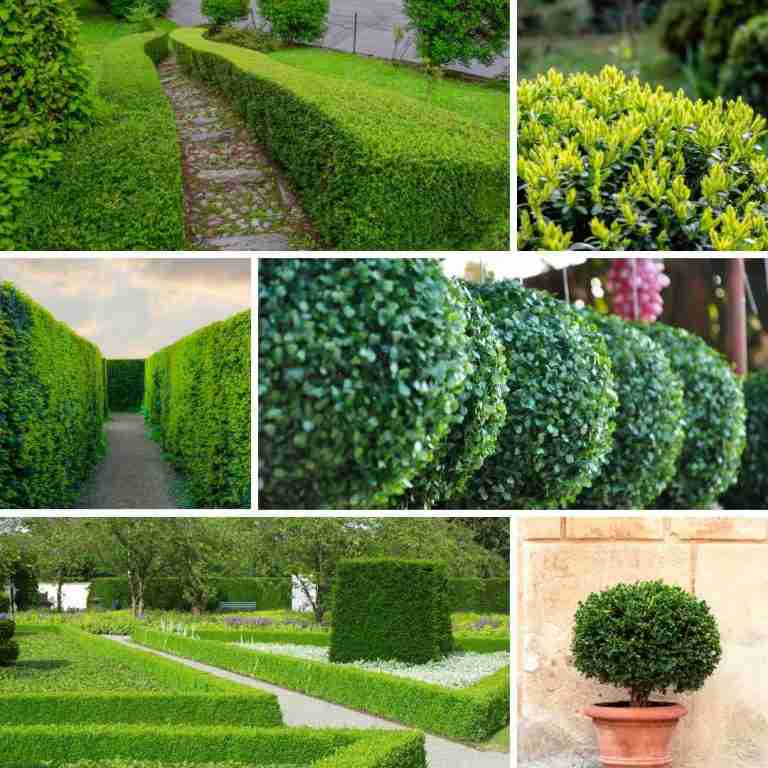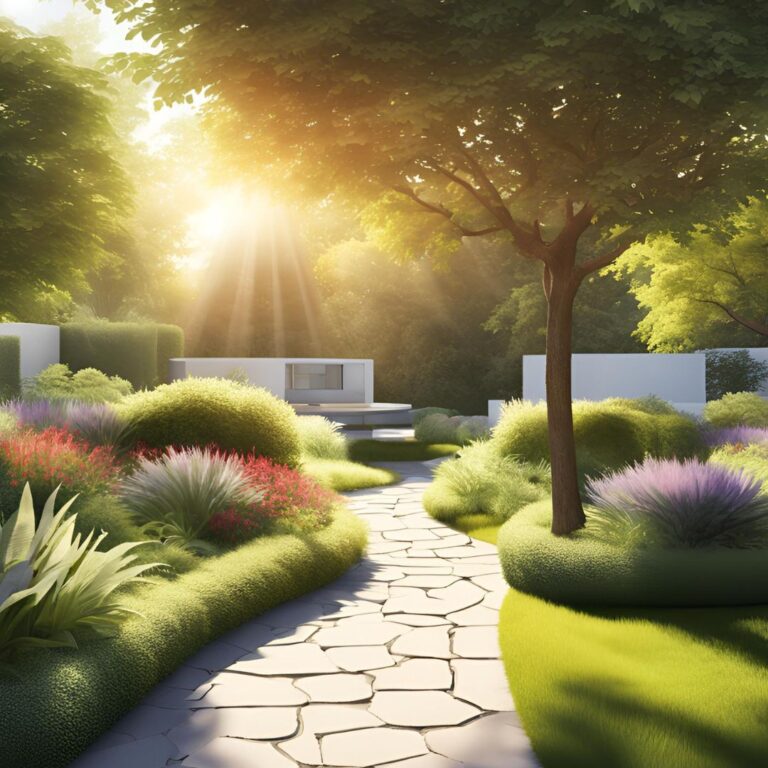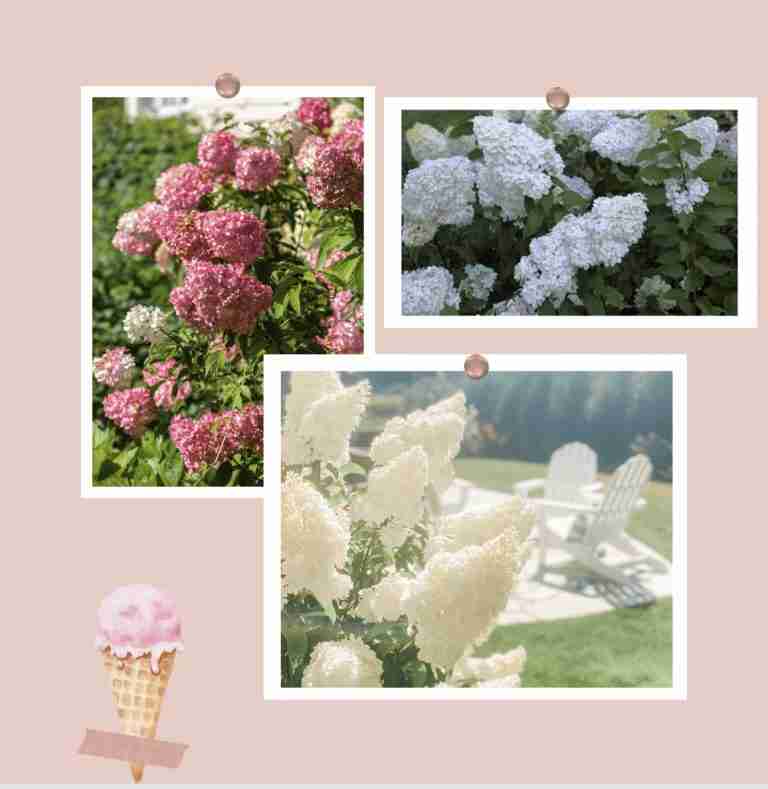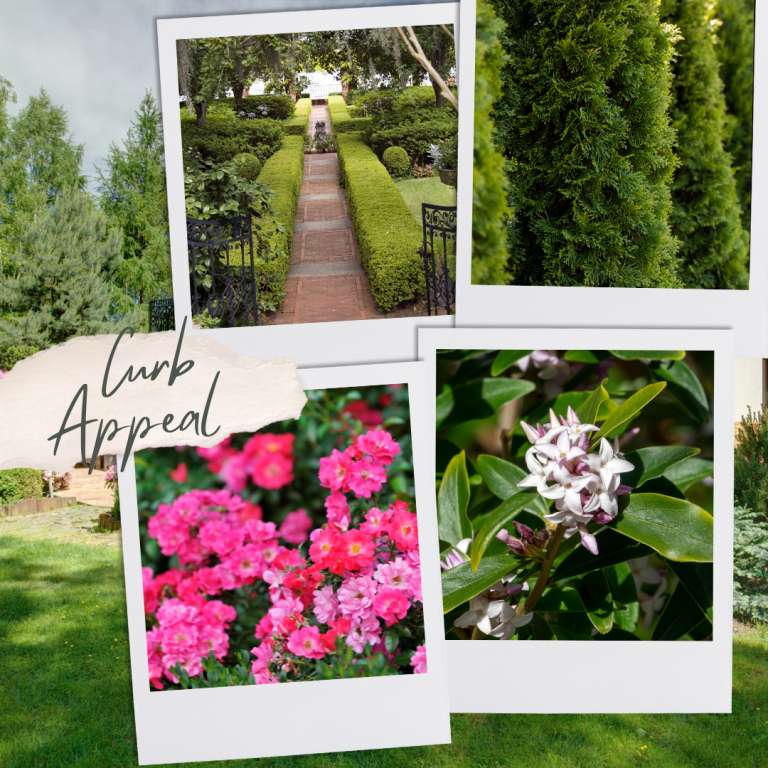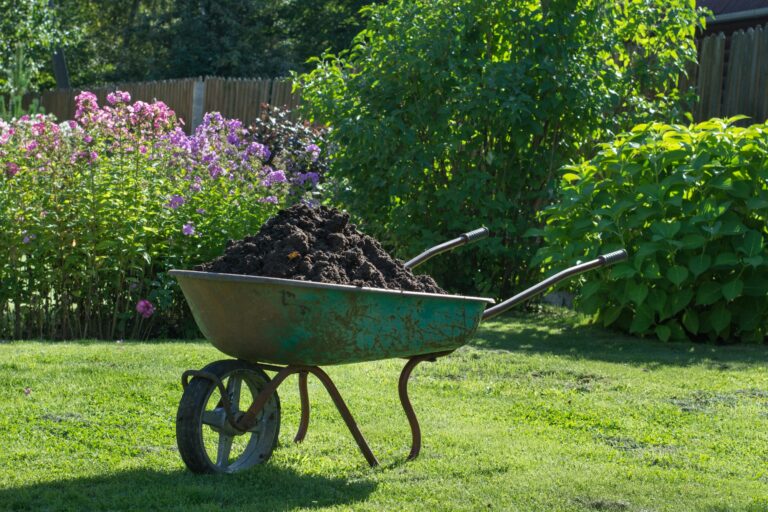Stunning hydrangea types and species-the ultimate guide
Enchanting Hydrangeas With East Coast Charm
Let your imagination wander: Picture a breathtaking hydrangea shrub, and what instantly comes to mind? Ah, it’s the enchanting vision of a magnificent mophead blue hydrangea that takes center stage. Transport yourself to a nostalgic summer day, where these grand blooms grace the landscape alongside a charming white picket fence, evoking the essence of Nantucket or Cape Cod’s coastal beauty.
The east coastal charm of hydrangea shrubs is truly captivating. These enchanting plants have become synonymous with the coastal regions along the eastern coast, evoking a sense of tranquility and timeless beauty. Imagine walking on a crushed oyster shell path that leads you to bounds of colorful blooming shrubs that bloom all summer long. The beauty fills you with emotion.
Did you know that hydrangeas have symbolic meanings associated with grace, abundance, and heartfelt emotions? They are often used in wedding bouquets, floral arrangements, and celebrations, adding a touch of elegance and sentiment to special occasions.
Welcome to the whimsical world of hydrangeas, where blooms of all shapes, sizes, and colors await!
One of my friends told me lately that she was shopping for hydrangeas at a nursery and became overwhelmed with so many varieties. I totally get it!
From the show-stopping mopheads to the delicate lacecaps, and everything in between it’s a lot! I hope this guide will break down the most popular varieties to help you figure out the best hydrangea top for your garden. So, grab a cup of tea, settle into your favorite garden nook, and let’s delve into the fascinating realm of these floral marvels together!
Let’s Learn All About The Colorful Blooms of Hydrangeas
Get ready to immerse yourself in a colorful world of blooms as we dive into the enchanting realm of hydrangeas. In this blog post, we’re going to explore all the delightful types of hydrangeas out there. From the bigleaf beauties that change hues like mood rings to the resilient mountain hydrangeas that thrive in chilly climates, we’ll uncover the secrets and quirks of each variety.
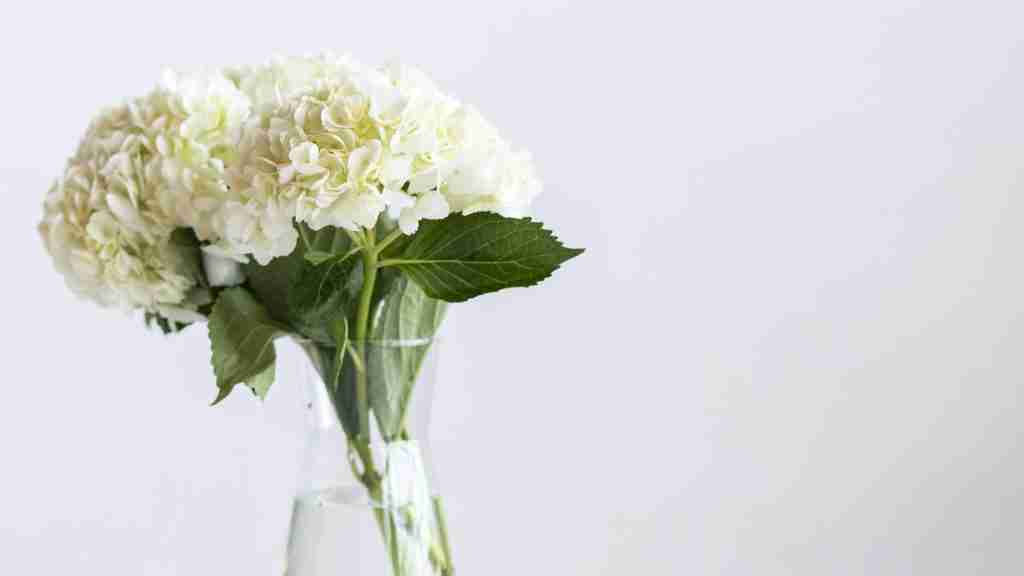
The Diverse Range Of Hydrangea Shrubs
With such a diverse range, from the awe-inspiring mopheads to the delicate lacecaps, and countless other options, it can be quite a lot to take in.
Fear not, for this guide is here to assist you in navigating the myriad of choices and finding the perfect hydrangea for your garden. So, grab a cup of tea, find a cozy spot in your beloved garden nook, and together, let’s embark on an exploration of these captivating floral marvels!
This versatility provides different ways to create hedges, borders, focal points, or vertical accents. There are a few plants that are deserving of a place in the garden like hydrangeas!
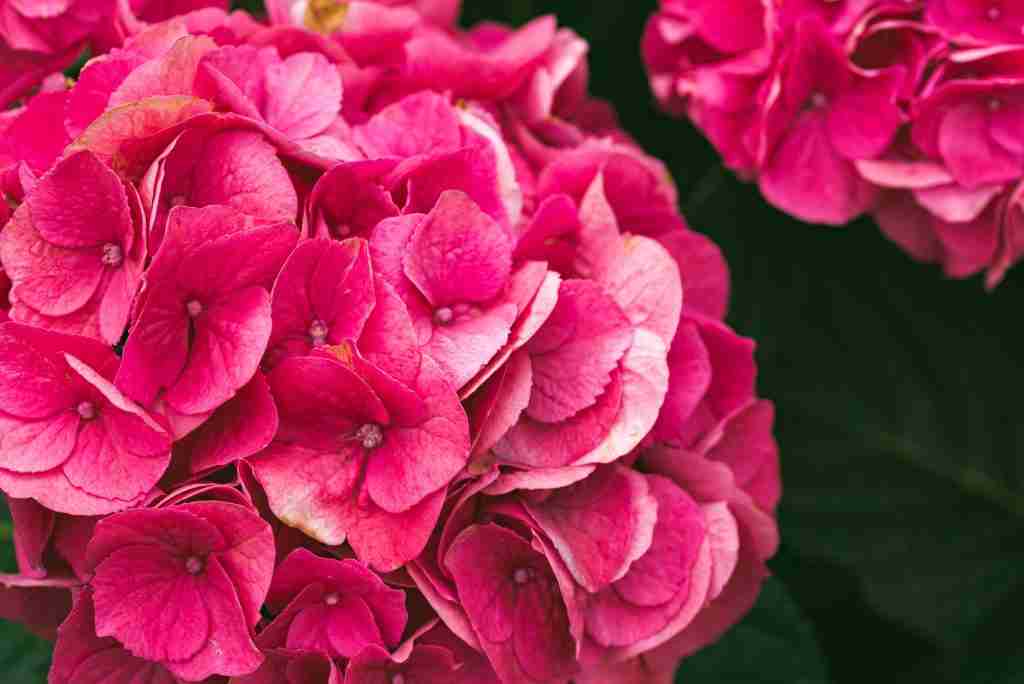
Most Popular Types Of Hydrangeas- The Ultimate Guide
Hydrangeas are exquisite flowering shrubs that thrive in gardens throughout the country. They are versatile plants that can be used as stunning foundation plants, border shrubs, or even potted flowers. Hydrangeas make excellent cut flowers which makes these beauties so popular.
It is said that there is over sixty types of hydrangea species today. With that said, there are six most popular types of hydrangeas. With numerous varieties available, hydrangeas come in an array of colors, sizes, and hardiness levels. There is a hydrangea bush for every preference and gardening condition.
The most confusing part of shopping for hydrangeas is that the names of the species differ. We have used the various names as part of this guide.
-
Bigleaf Hydrangea (Hydrangea macrophylla)
A bigleaf hydrangea, scientifically known as Hydrangea macrophylla, is a type of hydrangea shrub characterized by its large, broad leaves.It is a popular and widely cultivated species of hydrangea due to its attractive flowers and foliage. This is perhaps the most well-known hydrangea type, featuring large, rounded flower clusters.
Bigleaf hydrangeas are further classified into two main categories: mophead hydrangeas, which have globe-shaped flower clusters, and lacecap hydrangeas, which have flat clusters with tiny flowers in the center and larger ones around the edges.”French Hydrangea”
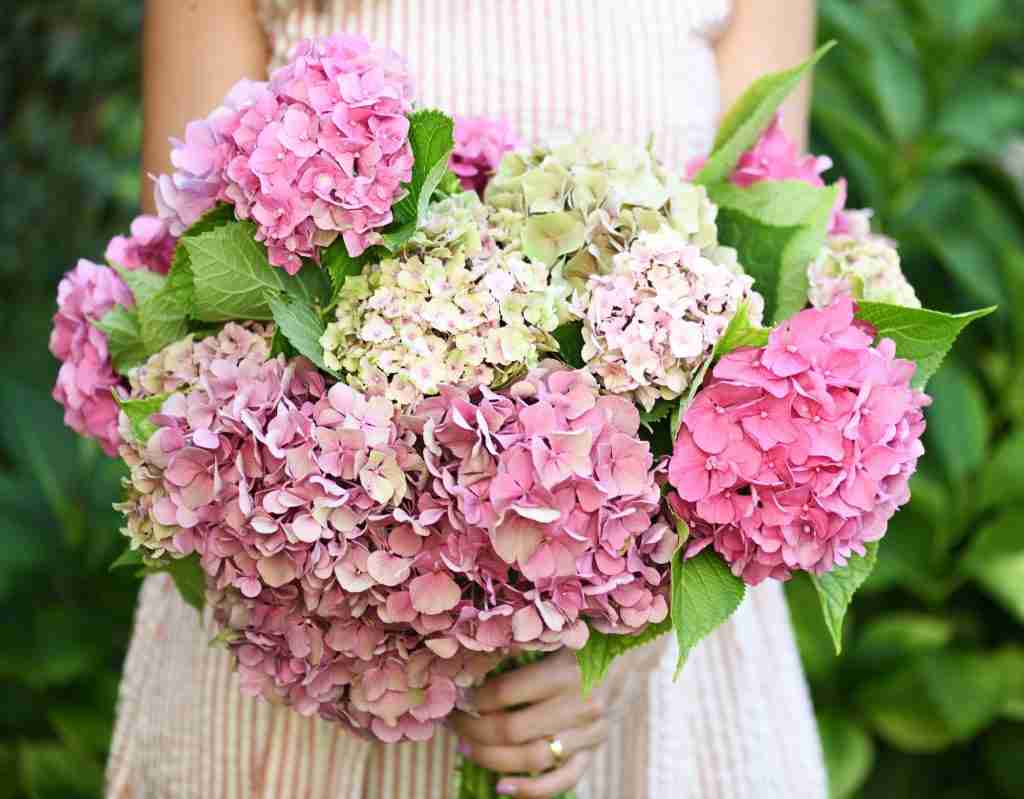
The “French Hydrangea”- What is it?
I am unsure why it is called a “French Hydrangea” because hydrangeas originated in Japan not France. Perhaps it’s the pretty french blue blooms?
A French hydrangea is another common name for the bigleaf hydrangea (Hydrangea macrophylla). It refers to a specific cultivar or group of cultivars within the bigleaf hydrangea species that originated in France. French hydrangeas are known for their large, rounded flower clusters and their ability to change flower color based on the pH of the soil. They are often prized for their vibrant and showy blooms, which can range in color from blue and purple to pink and white.
a. The Mophead Hydrangea
Mophead hydrangea is often planted with boxwoods as companion plants. Boxwoods offer that timeless structure that pair well with the soft nature of hydrangeas. This is a classic landscape design. I happen to love this look and have incorporated this design in my own garden.

Mophead hydrangeas, also known as Hydrangea macrophylla, is a popular ornamental shrub valued for its large, rounded mophead flowers. The lush flower color clusters and foliage are stunning. It belongs to the Hydrangeaceae family and is native to Japan and Korea.
The name “mophead” refers to the shape of the flower clusters, which resemble a dense ball or a mop. These flower heads are composed of numerous small flowers packed closely together, creating a vibrant and eye-catching display. The individual flowers within the cluster are typically tubular or star-shaped.
How The Flower Colors Change With PH Levels
Mophead hydrangeas are known for their ability to change color based on the pH of the soil in which they are grown. In acidic soil conditions (pH below 7), they produce blue flowers, while in alkaline soil conditions (pH above 7), they produce pink flowers. The intensity of the colors vary depending on the specific cultivar.
How To Care For Mophead Plants
These hydrangeas prefer partial shade and well-drained soil. They require regular watering, especially during dry spells, and benefit from mulching to retain moisture. Pruning is done in late winter or early spring, removing old or weak stems to encourage new growth and maintain a tidy shape.
This variety is a popular choice for gardeners and is often used in borders, hedges, or as specimen plants. They also make beautiful cut flowers for floral arrangements.
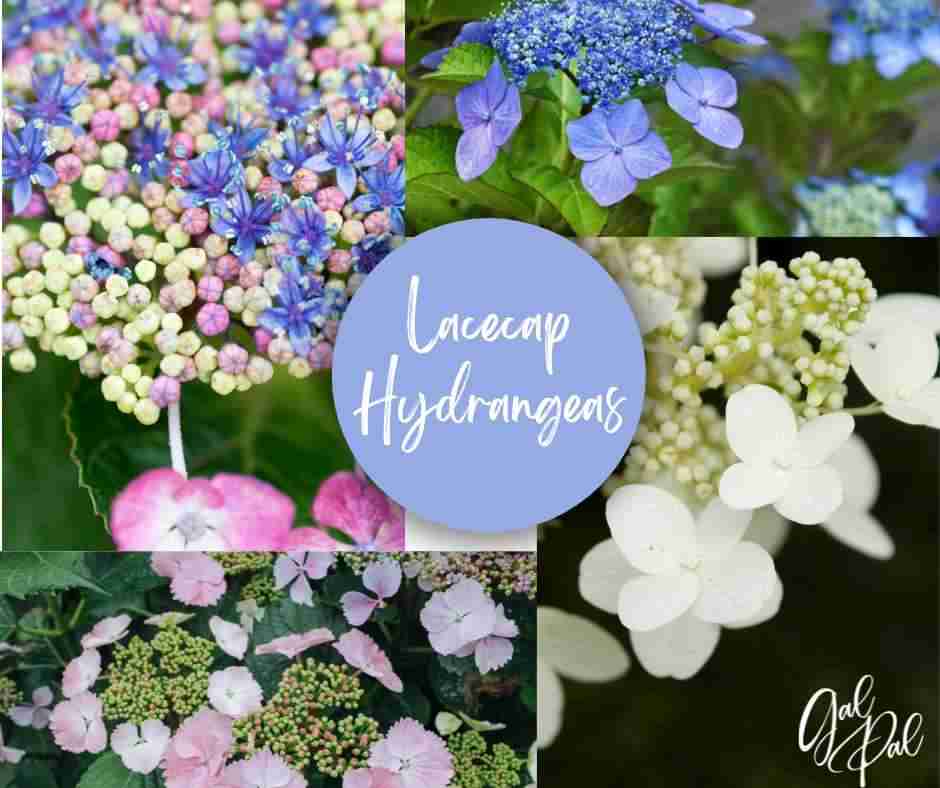
b. Lacecap Hydrangeas | Hydrangea macrophylla norma
Lacecap hydrangeas have a unique and fitting nickname because their flower heads resemble flat caps with delicate frilly edges. It’s fascinating that these lovely shrubs belong to the bigleaf hydrangea species (Hydrangea macrophylla) native to Japan, just like mophead hydrangeas.
What sets lacecap hydrangeas apart is their variation in size, bloom color, and bloom time. The striking contrast between the wide, dark green serrated leaves and the large, flattened flower heads creates a lush and captivating scene. These shrubs are known for their rapid growth, often reaching heights of two feet or more each year. To give them the best start, it’s recommended to plant them in the fall or early spring.
Discovering the beauty of lacecap hydrangeas is like uncovering a hidden gem in nature’s vast collection. Observing their intricate flower formations and the vibrant colors they bring to the landscape is a true delight. It’s a reminder of the wonders that can be found in the natural world, with each lacecap hydrangea having its own unique charm and character.
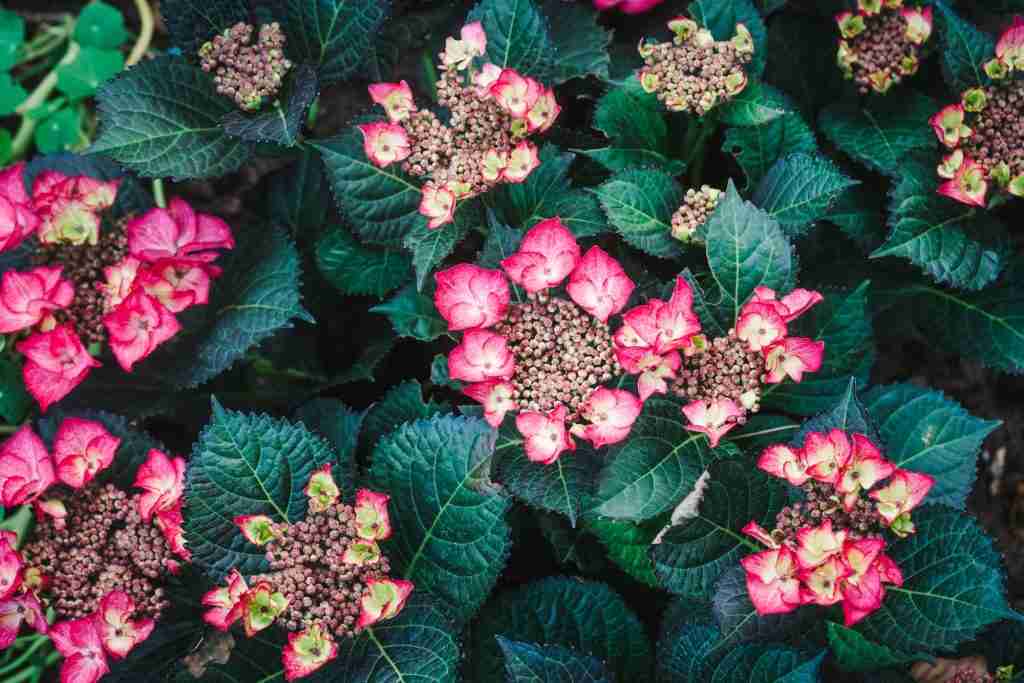
What are Lacecap Hydrangeas Known For?
Lacecap hydrangeas are not a type of hydrangea, but a style of flower. These shrubs are known for their rapid growth, often reaching heights of two feet or more each year. To give them the best start, it’s recommended to plant them in the fall or early spring.
What sets lacecap hydrangeas apart is their variation in size, bloom color, and bloom time. The striking contrast between the wide, dark green serrated leaves and the large, flattened flower heads creates a lush and captivating scene.
Discovering the beauty of lacecap hydrangeas is like uncovering a hidden gem in nature’s vast collection. Observing their intricate flower formations and the vibrant colors they bring to the landscape is a true delight. It’s a reminder of the wonders that can be found in the natural world, with each lacecap hydrangea having its own unique charm and character.
2. Panicle Hydrangea (Hydrangea Paniculata)
Panicle hydrangeas – also known as peegee hydrangeas, hardy hydrangeas, and Limelight hydrangeas,are the easiest to grow, most adaptable of all hydrangeas.
Some people call this variety “black thumb hydrangea” because they are so easy and reliable to grow. Panicle hydrangeas are characterized by elongated cone-shaped flower clusters.
What Are Hydrangea Paniculata Known For?
Hydrangea paniculata Panicle hydrangeas are known for their cone shaped flower heads. These are large blooms typically start white and may turn to pink.
They typically bloom in late summer and early fall, with their flowers starting out white and gradually transitioning to shades of pink or even deep red as the season progresses.
Panicle hydrangeas are known for their hardiness and ability to tolerate a wide range of climates. Panicle Hydrangeas can vary in size with the “Grandiflora” aka peegee hydrangea is a very large shrub. So large that it can reach 20 feet tall.
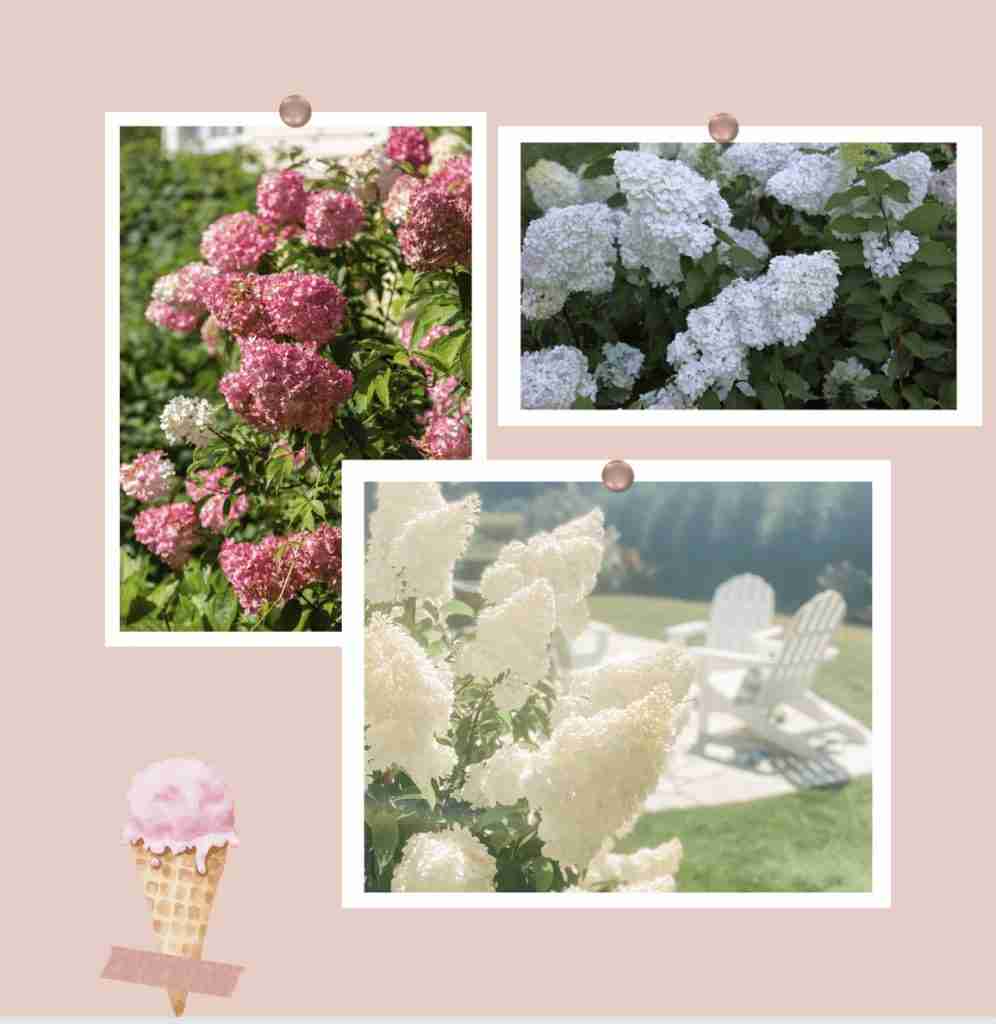
Many people love the “Limelight’ H. paniculata”. This shrub has won multiple awards for it’s winning panicle hydrangea with creamy white flowers that age to green, then pink. Their sturdy stems are flop-resistant, making them excellent in bouquets and arrangements.
My very favorite: Vanilla Strawberry Hydrangea Vanilla Strawberry ( Hydrangea paniculata ‘Rehny’ ) is one of my favorites because it is very easy to grow and doesn’t require much maintenance. The blooms are unreal!!! I get so many compliments on my Vanilla Strawberry bush.
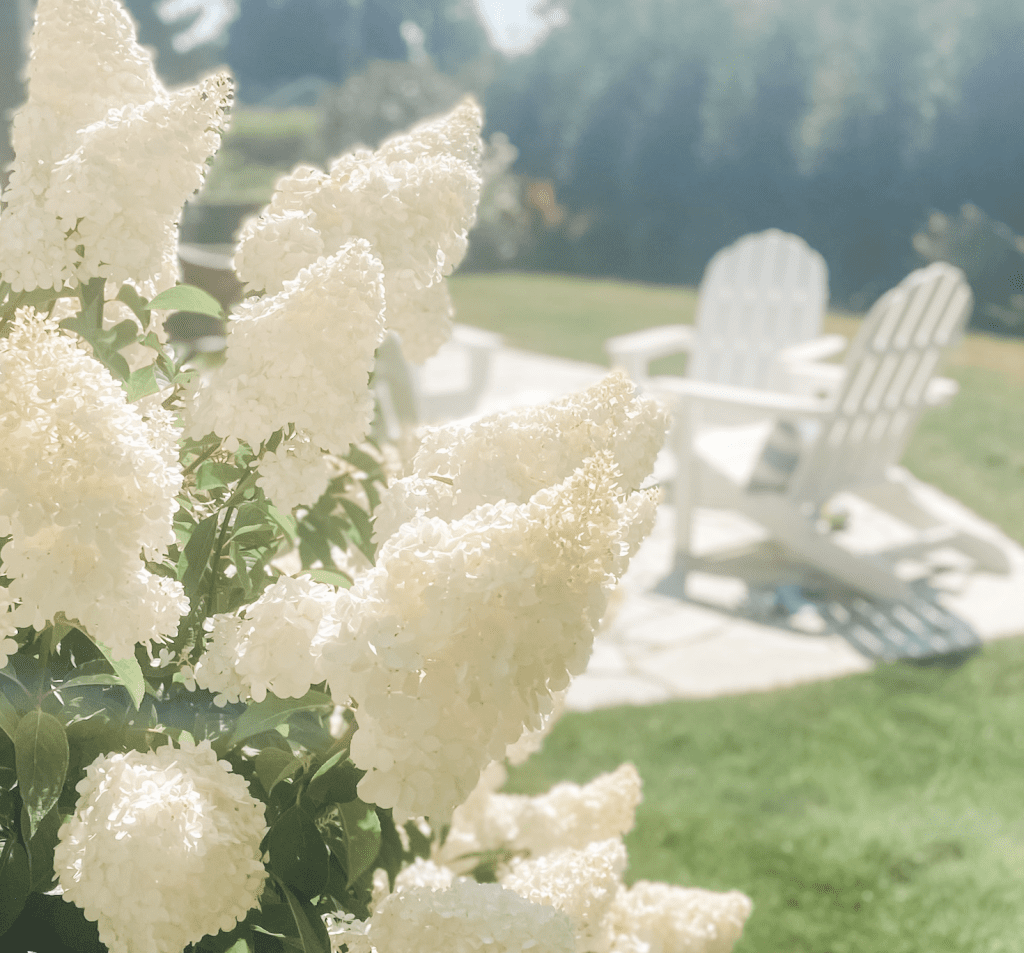
It bears large clusters of white flowers that fade to strawberry pink from mid-summer to autumn. The strong stems make it easy to dry this variety. Read more about the Vanilla Strawberry Hydrangea here.
Ideal Conditions for Panicle Hydrangeas‘’Hydrangea paniculata’’are hardy in Zone 4 and tolerant of all soil types. Plants thrive in full sunshine to partial shade; they bloom better at night. Water well in early seasons for plant development. Ideal for hedges, or massing, as well as containers.
Every season I dry my Vanilla Strawberry Hydrangeas and display them in a large ginger jar. This dried floral arrangement adds to the Hampton design vibe I have going on in the house.
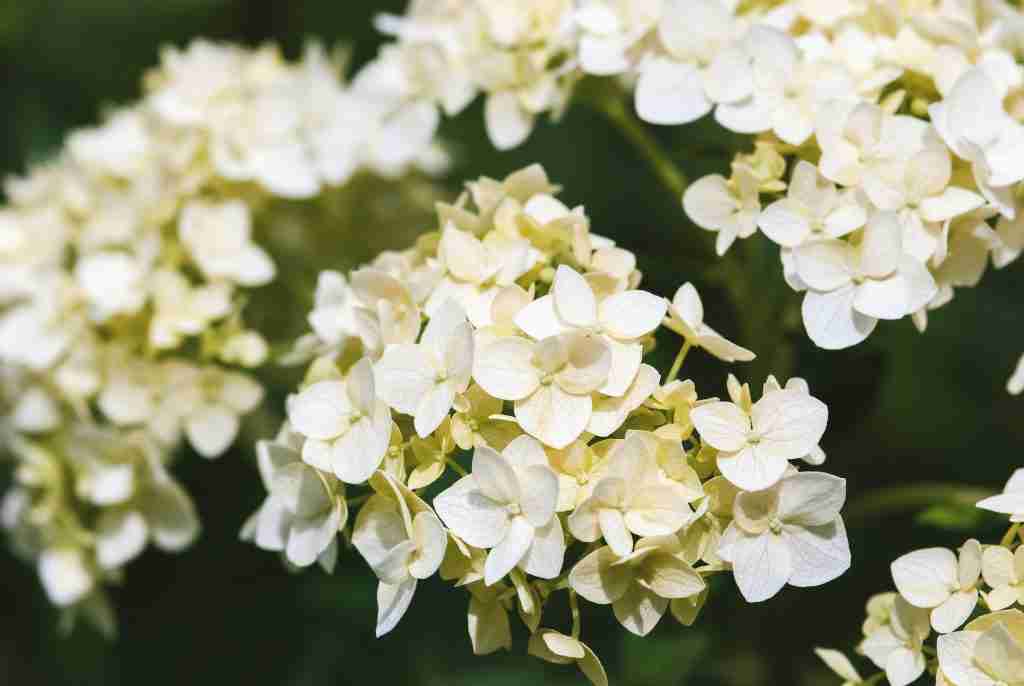 Smooth Hydrangea flowers closeup, Hydrangea arborescens green white flowers in garden
Smooth Hydrangea flowers closeup, Hydrangea arborescens green white flowers in garden
3. Smooth Hydrangea (Hydrangea arborescens)
These hydrangeas, also called wild hydrangeas, are native to the US and can tolerate hot climates. They’re hardy in zones 4 to 7 and are sometimes used as hedges. Arborescens leaves are heart-shaped, thinner, and floppier than macrophylla (mophead) hydrangeas.
Smooth hydrangeas thrive in both warm and cold climates. Annabelle hydrangea is a well-known cold-hardy variety that turns from white to light green.
The “Incrediball hydrangea” is an improved version with stronger stems and more abundant flowers. Smooth hydrangeas feature large, rounded flower clusters and are known for their hardiness and adaptability.
The flowers are usually white or creamy white, and they tend to bloom in early summer. A popular cultivar of smooth hydrangea is the ‘Annabelle,’ which produces large, fluffy white flower heads.
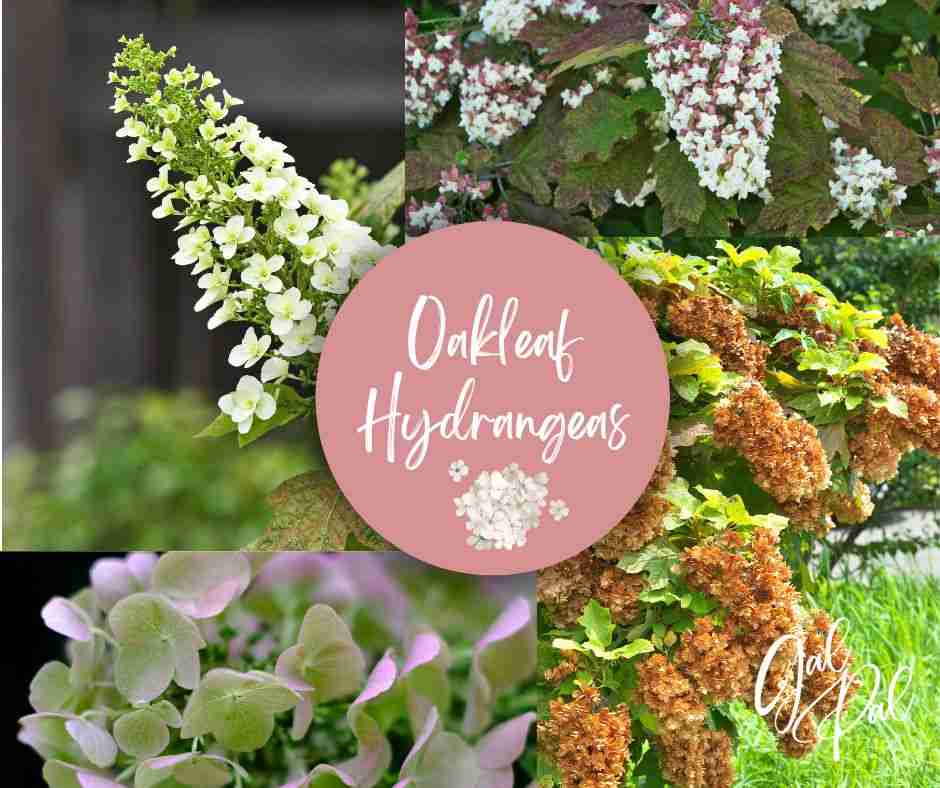
4. Oakleaf Hydrangea (Hydrangea quercifolia)
Oakleaf hydrangeas are unique due to their distinct oak-like foliage, which turns vibrant shades of red, orange, and purple in the fall. Their flowers are usually cone-shaped, and they start out white before aging to shades of pink or deep maroon.
Oakleaf hydrangeas add a touch of elegance to any garden with their beautiful foliage and flower displays. Drought tolerant, but thrives in moist soils, give oakleaf hydrangea a well-draining location.
Plants benefit from a layer of mulch year round. Pruning Oakleaf Hydrangeas Oakleaf hydrangeas require very little pruning. This species tolerates full sun to part shade in hardiness zones 5 through 9.
Oakleaf hydrangeas do well with some shade. If you are looking for shade loving plants there are 16 perennials to consider.
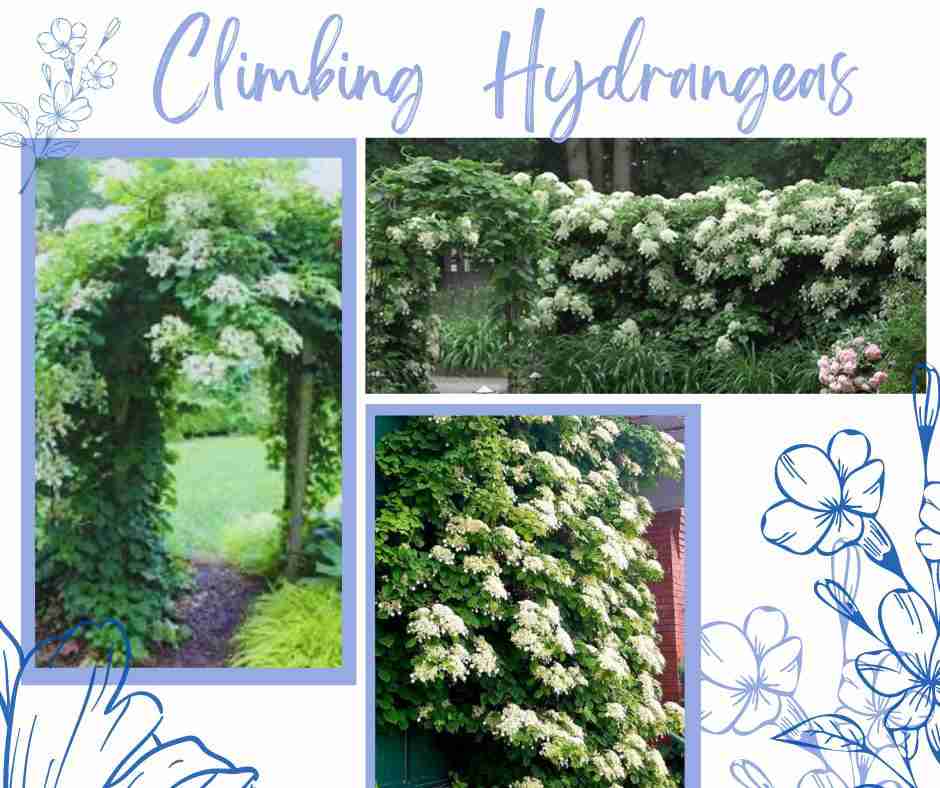
5. Climbing Hydrangea (Hydrangea anomala petiolaris)
Unlike other hydrangeas, climbing hydrangeas are vines that can grow on walls, fences, and other structures. They produce large, flattened clusters of white flowers and have attractive, heart-shaped leaves.
Climbing hydrangeas are ideal for adding vertical interest and creating a charming, romantic ambiance in the garden. The journey of a climbing hydrangea plant is one of patience and anticipation. Its growth is unhurried, often taking three to five years before it reaches the much-awaited flowering stage. But once this remarkable plant establishes itself, it becomes a captivating centerpiece that can soar to great heights, reaching 50 feet or even more at maturity.
The reward for this patient wait is a summer filled with the delightful fragrance of its blooming flowers.While the climbing hydrangea beauty is undeniable, it’s important to exercise caution when choosing its planting location.
Use Caution When Planting The Climbing Hydrangea
It’s essential to consider the safety of our furry friends, as all parts of hydrangeas are toxic to dogs, cats, and horses. By being mindful of where we place this stunning climber, we can ensure the well-being of our beloved pets and create a harmonious environment where beauty and safety coexist.
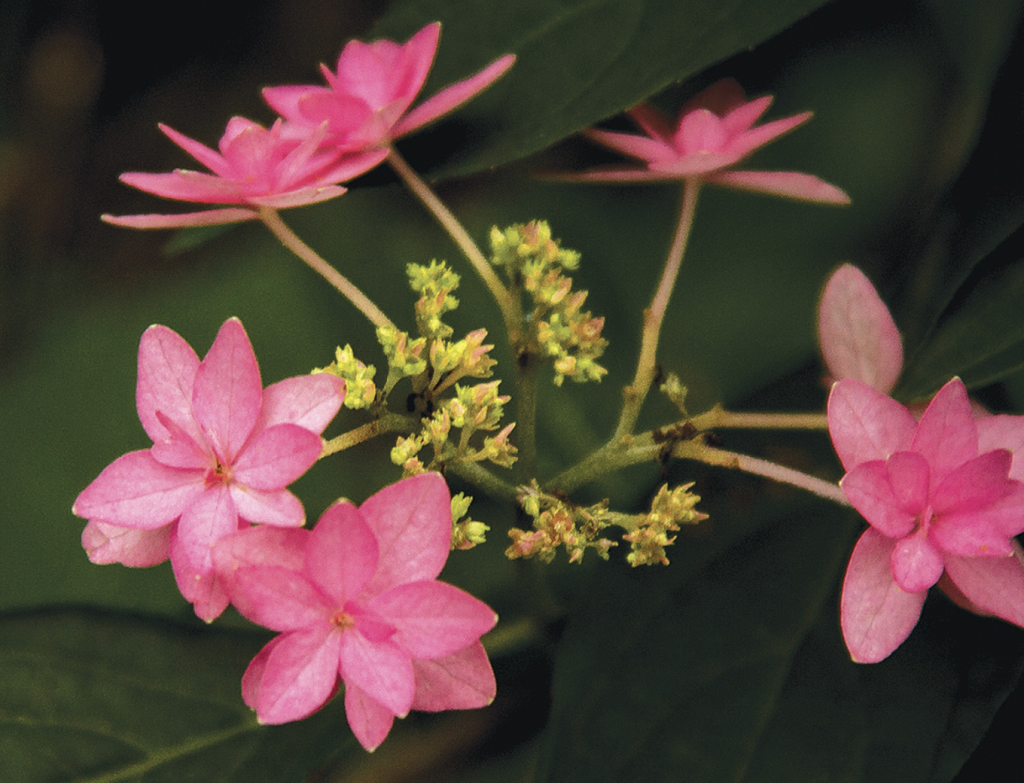
6. Mountain Hydrangeas (Hydrangea Serrata)
The Tuff Stuff series from Proven Winners ColorChoice consists of mountain hydrangeas, closely related to the bigleaf hydrangeas mentioned earlier.
However, mountain hydrangeas are native to cold mountainous regions, which has made them naturally adapted for better performance in colder climates. They share a striking resemblance to bigleaf hydrangeas, showcasing large pink, purple, or blue blooms. Similarly, they bloom on old wood, following a similar blooming pattern.
Mountain hydrangeas prefer shade and are grown in rich medium moisture soil. The prefer good drainage. Perfect for foundation plantings and work well in containers as well.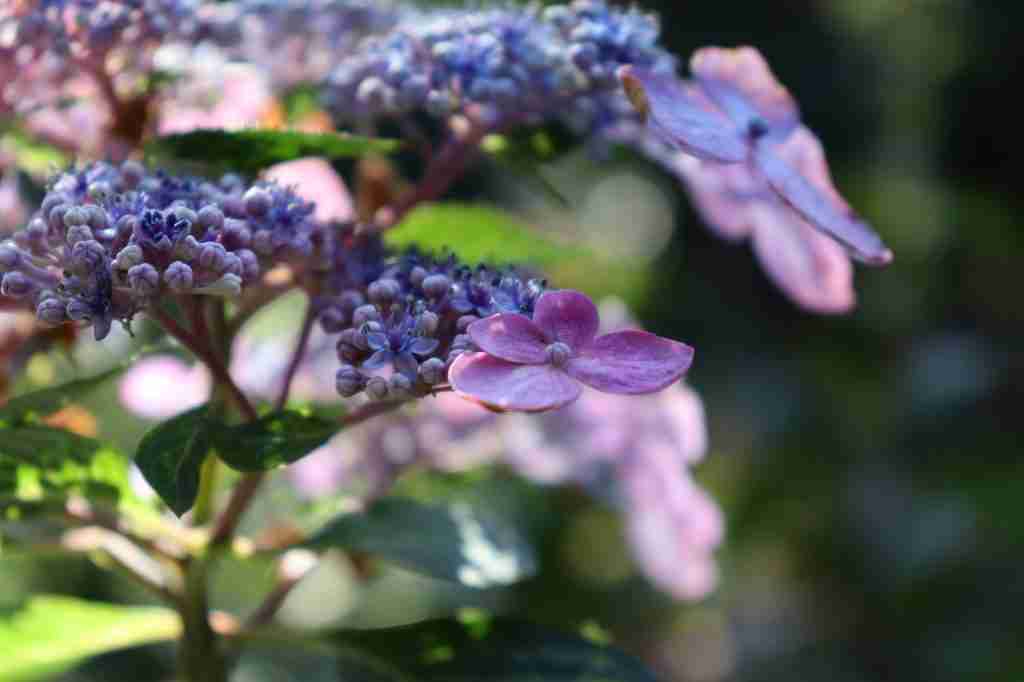
Bluebird’ is a mountain hydrangea staple; the Royal Horticultural Society of England gave this plant its award of merit in 1960, and it has been a solid performer ever since. It has an upright, dense form and prefers partial shade. Flowers tend to be a light blue, and at 6 to 8 inches wide, they are quite large.
Variations In Hydrangea Types
The variations in hydrangea types are influenced by factors such as genetics, hybridization, and selective breeding by horticulturists. Breeders have developed numerous cultivars within each hydrangea type, resulting in an extensive range of colors, flower shapes, and sizes.
Additionally, environmental conditions, such as soil pH and availability of nutrients, can affect the color and growth of hydrangea flowers.
Understanding the different types of hydrangeas allows gardeners and enthusiasts to select the varieties that best suit their preferences, climate, and gardening goals. Whether you desire the classic elegance of the bigleaf hydrangea, the graceful charm of the climbing hydrangea, or the hardiness of the panicle variety, there is a hydrangea type to delight every gardener and bring beauty to gardens and landscapes.
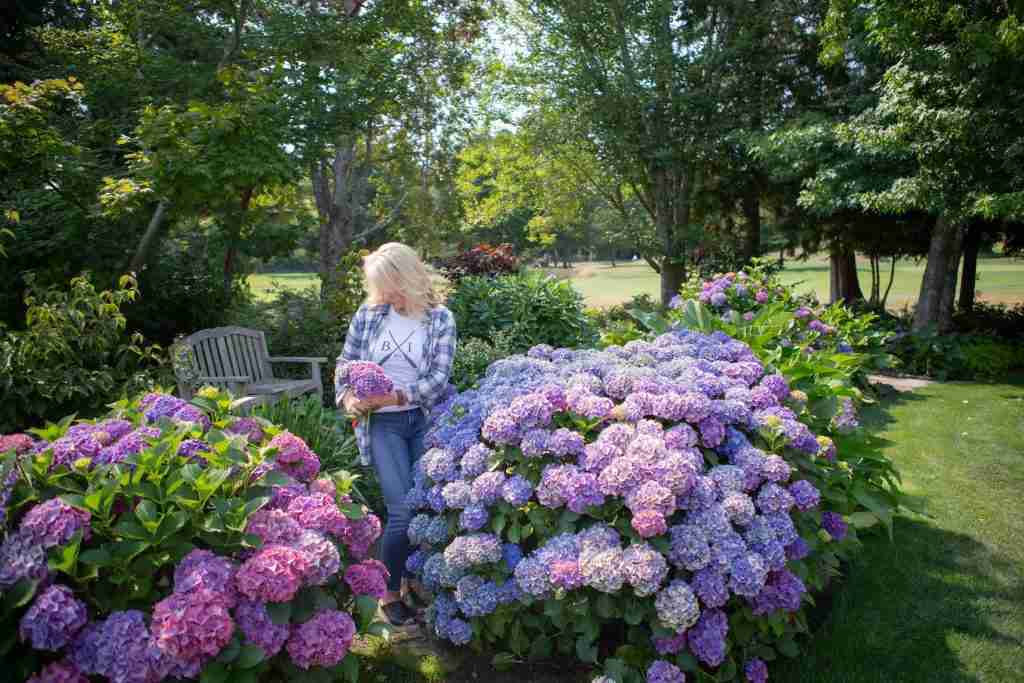
Pruning Hydrangea Varieties
When it comes to pruning hydrangeas, the timing and approach can vary depending on the type of hydrangea you have. Knowing your hydrangea variety is important. Let me break it down for you:
Hydrangeas that bloom on old wood, such as Macrophylla (Bigleaf), PeeGee (Paniculata), Oakleaf (Quercifolia), and Climbing Hydrangea (Anomala petiolaris), should be pruned right after they finish flowering. This allows you to remove any dead blooms and shape the plant before it starts developing next year’s buds.
Panicle hydrangeas tolerate heavy pruning to maintain size and are sometimes shaped into a tree form.
Pruning Oakleaf Hydrangeas Oakleaf hydrangeas require little pruning.
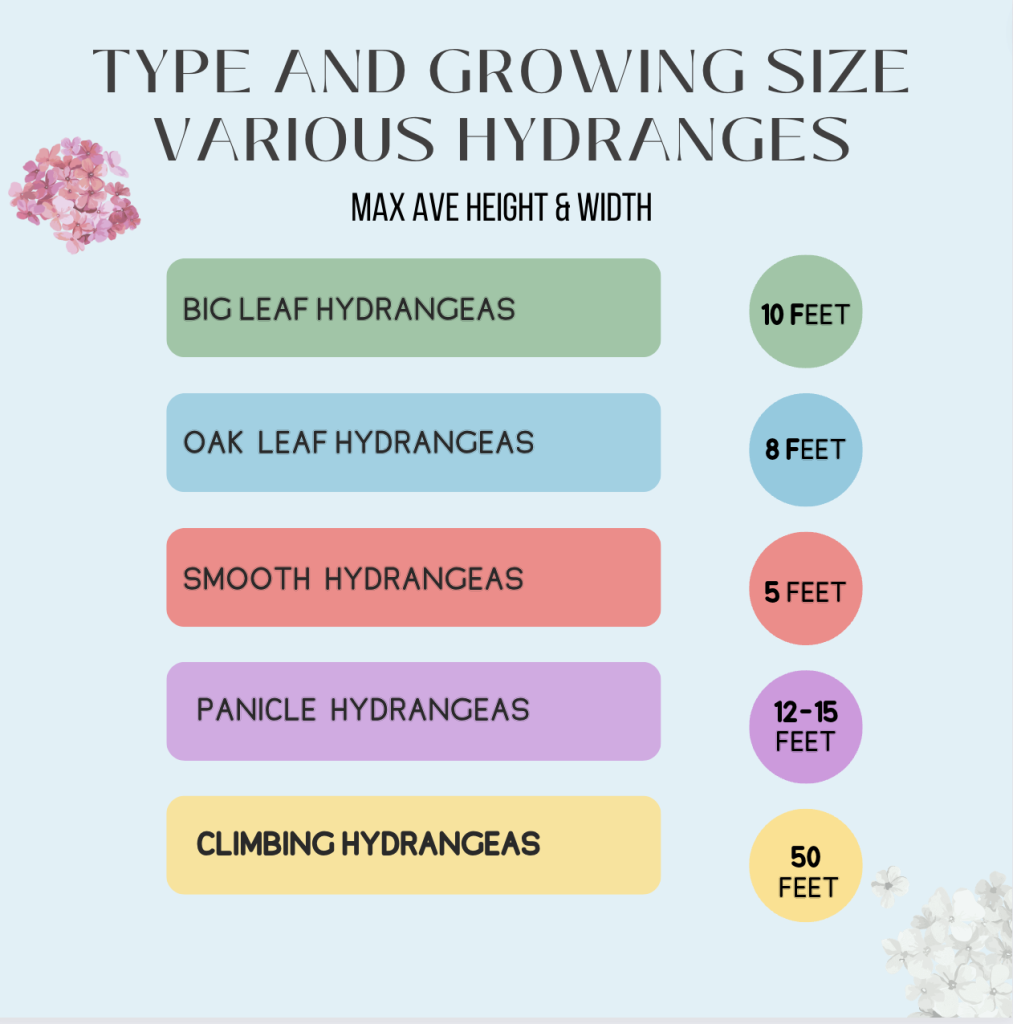
Hydrangeas That Grow On New And Old Wood
What Does It Mean- “Growing On New Or Old Wood?’
Hydrangeas that bloom on old wood develop flower buds on the previous year’s growth. This means that the flower buds form during the previous summer or fall and remain dormant through the winter.
Examples of hydrangeas that bloom on old wood include bigleaf hydrangeas (Hydrangea macrophylla) and oakleaf hydrangeas (Hydrangea quercifolia). Pruning these types of hydrangeas at the wrong time, especially in late winter or spring, can remove the flower buds and result in little to no blooms that year.
In contrast, hydrangeas that bloom on new wood produce flower buds on the current year’s growth. These hydrangeas develop flower buds in the same growing season that they blossom.
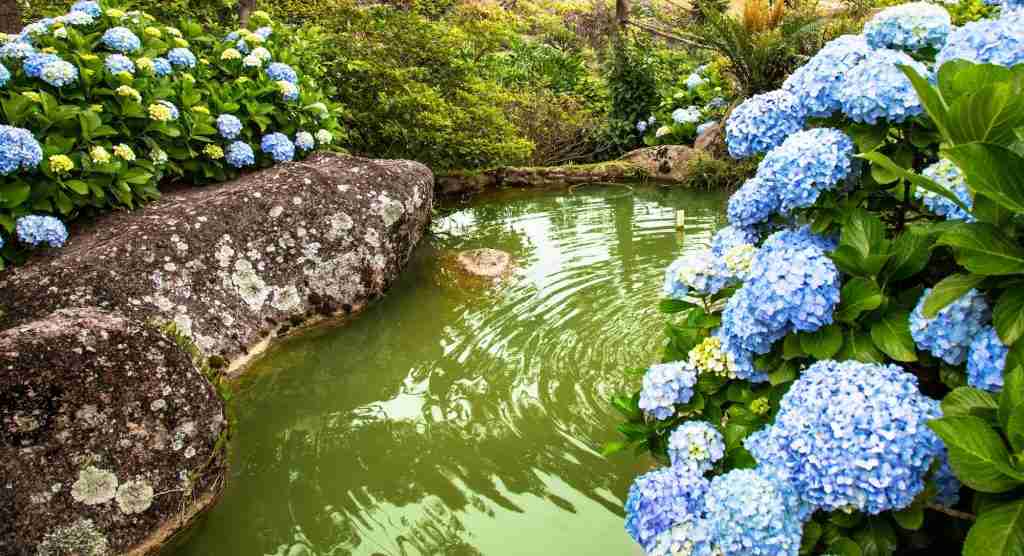
New Wood Hydrangeas
Panicle and smooth hydrangeas flower on new wood (growth created in the current season). Hydrangeas that bloom on new wood, love a healthy prune every year. These types tolerate very hard pruning to control the size of the bush, and a bit of pruning in spring may encourage more flowers.
For hydrangeas that bloom on new wood, like Smooth (Arborescens) and Mountain (Serrata) hydrangeas, late winter, or early spring is the ideal time for pruning. Pruning during this period ensures you won’t remove next year’s flower buds, as they develop on the current season’s growth.
Now, here’s the truth about hydrangeas: most of them don’t require pruning. They will flourish and maintain their beauty even without pruning.. However, if you wish to control the shape or manage the size of your hydrangea, or if there is dead wood that needs to be removed, pruning is beneficial.
Old Wood Hydrangeas
If you have hydrangeas that bloom on old wood, you should trim them promptly after they finish blooming. By selectively removing a few of the older and thicker stalks each year, you can control the size and shape of the plant while promoting new growth. This way, you’ll ensure an abundance of blooms for the following season.
Remember, pruning is not mandatory for hydrangeas, but it’s a useful tool for maintaining their appearance and managing their size. Ultimately, the decision to prune or not depends on your personal preferences and the specific needs of your hydrangea..
Old wood hydrangeas are shrubs that’ll bloom on last year’s wood, while new wood hydrangea stems grow in the present season and from the base of the plant. But, no matter which you choose, the main thing to remember is that all hydrangeas, honestly, don’t need to be pruned. You can deadhead them or not. You can prune them or not. If you want large bushes, keep the pruning to a minimum.
Frequently Asked Questions About Hydrangeas- FAQ;s
Q: Which Hydrangea Blooms The Longest?
The winner of the longest bloom contest is smooth hydrangea (Hydrangea arborescens). The smooth hydrangea is native to the United States and thrives in USDA zones 4 – 9. The species blooms on new wood and is often cut back to the ground in the winter. With proper hydrangea care, it rapidly grows to 5 feet high with an even larger spread to form flowering mounds.
Q: What type of hydrangea can take full sun?
The panicle hydrangea loves the hot sun. There are many varieties of this type of hydrangea.
Q: What is the easiest hydrangea to grow?
The panicle hydrangea is the hardiest hydrangea to grow How big is a jumbo hydrangea?
Q: What are the colors of hydrangeas and their meaning?
Hydrangeas commonly come in shades of pink, blue, purple, and green. The hydrangea symbolism for each color is as follows:
- Pink hydrangeas symbolize heartfelt emotion.
- Blue hydrangeas symbolize frigidity and apology.
- White hydrangeas symbolize boasting or bragging.
- Purple hydrangeas symbolize a desire to deeply understand someone.

